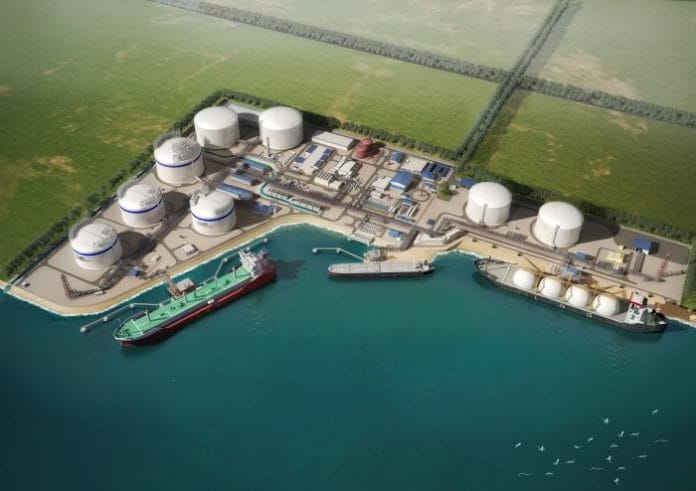Singapore aims to have a second liquefied natural gas (LNG) terminal operational by the end of the decade to further enhance the country’s energy security.
Singapore LNG Corporation (SLNG), which built, owns and operates Singapore’s current LNG terminal, has been given approval to also develop, own and operate the second terminal.
SLNG is studying the possibility of having the terminal on an LNG ship, unlike the current one, which is an onshore terminal.
Deputy Prime Minister and Finance Minister Lawrence Wong made the announcement during SLNG’s 10th-anniversary gala dinner on Tuesday (Oct 24) at the Sands Expo and Convention Centre, Marina Bay Sands.
“The second terminal will better enable Singapore’s demand for natural gas to be met entirely by liquefied natural gas, should that become necessary, and will enhance SLNG’s capacity to deliver more LNG-related services, further entrenching Singapore as a key trading and bunkering hub for LNG,” said SLNG in a press release issued after Mr Wong’s announcement.
SLNG’s current terminal has sufficient capacity to support all of Singapore’s power generation needs, based on current demand, if needed.
Mr Wong said the current terminal has “throughput capacity of about 10 million tonnes per annum”, and that peak utilisation this year was at 60 per cent. However, demand for LNG is expected to grow, with Mr Wong adding that Singapore will likely need more natural gas in the medium term as the economy continues to grow.
“Today, almost half of our total natural gas used for power generation flows through the terminal,” said Mr Wong.
“We have a more diverse gas mix, and so we are better able to respond to supply shocks, and we have a more resilient and secure energy system.”
Mr Wong warned of “continued disruptions in the global energy market”, with a standby LNG facility operated by SLNG to guard against sudden disruptions to energy supplies.
About 95 per cent of Singapore’s electricity is generated using natural gas currently, and the country expects it to remain an important part of the energy mix even as it seeks to decarbonise the power sector.
LNG is natural gas that is stored and transported in liquid form at atmospheric pressure and at a temperature of about -161 degrees Celsius. Liquefying natural gas reduces its volume by 600 times, making it easier to store and transport. LNG is regasified when it reaches its destination.









